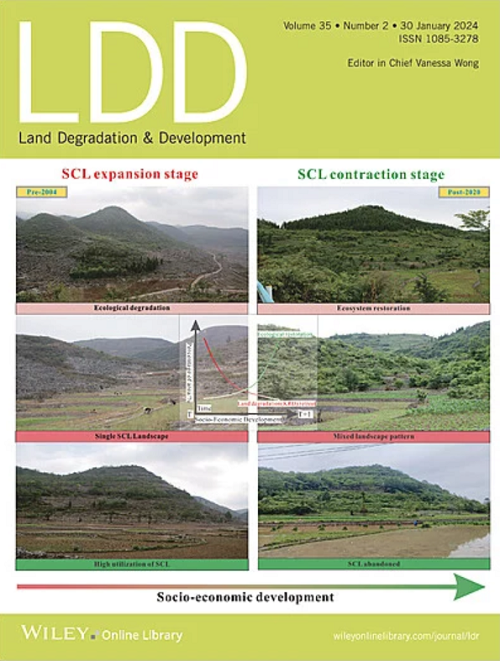禁牧草地根际细菌和AMF对羊草生物量的影响
IF 3.7
2区 农林科学
Q2 ENVIRONMENTAL SCIENCES
引用次数: 0
摘要
禁牧是当前草地自然恢复的一项基本措施。原生植物和核心微生物群是草地恢复的关键,但长期放牧后羊草根际核心微生物群研究较少。对长期放牧禁牧区12个样品的羊草根际细菌群落和丛枝菌根真菌群落进行了研究。细菌的组装受确定性过程支配(|β‐NTI| >;2: 63.64%;0.5: 84.85%), AMF受随机过程(|β‐NTI| <;2: 60.61%, MST >;0.5: 56.06%)。与AMF相比,长期放牧后细菌群落的稳定性(鲁棒性:0.37 ~ 0.2875)、抗逆性(脆弱性倒数:25.613 ~ 100.804)和内聚性(1.4232 ~ 1.5815)显著高于AMF。在根际细菌群落和AMF群落中选择了重点、共享、专门型和通才型微生物类群,结果表明所选微生物类群与羊草生物量和氮磷吸收率均呈显著正相关。结果表明,细菌的共享类群和关键类群以及AMF的共享类群对羊草生物量有显著贡献。在所选的10个核心微生物分类群中,5个细菌属和2个AMF OTUs的相对丰度均超过1%。因此,在利用核心微生物群进行草地恢复时,应特别注意原生植物根际中高丰度的关键微生物和共享微生物,因为它们在促进植物生长和退化草地恢复方面具有更大的潜力。本文章由计算机程序翻译,如有差异,请以英文原文为准。
Keystone and Shared Taxa of Rhizosphere Bacteria and AMF Drive Leymus chinensis Biomass in Grazing Exclusion Grasslands
Grazing exclusion is a fundamental measure in current grassland nature‐based restoration practices. Native plants and the core microbiome are key for grassland restoration, but the rhizosphere core microbiome of Leymus chinensis grassland after long‐term grazing exclusion is poorly studied. We examined the bacterial communities and arbuscular mycorrhizal fungi (AMF) communities across 12 samples of L. chinensis L. chinensis L. chinensis
求助全文
通过发布文献求助,成功后即可免费获取论文全文。
去求助
来源期刊

Land Degradation & Development
农林科学-环境科学
CiteScore
7.70
自引率
8.50%
发文量
379
审稿时长
5.5 months
期刊介绍:
Land Degradation & Development is an international journal which seeks to promote rational study of the recognition, monitoring, control and rehabilitation of degradation in terrestrial environments. The journal focuses on:
- what land degradation is;
- what causes land degradation;
- the impacts of land degradation
- the scale of land degradation;
- the history, current status or future trends of land degradation;
- avoidance, mitigation and control of land degradation;
- remedial actions to rehabilitate or restore degraded land;
- sustainable land management.
 求助内容:
求助内容: 应助结果提醒方式:
应助结果提醒方式:


